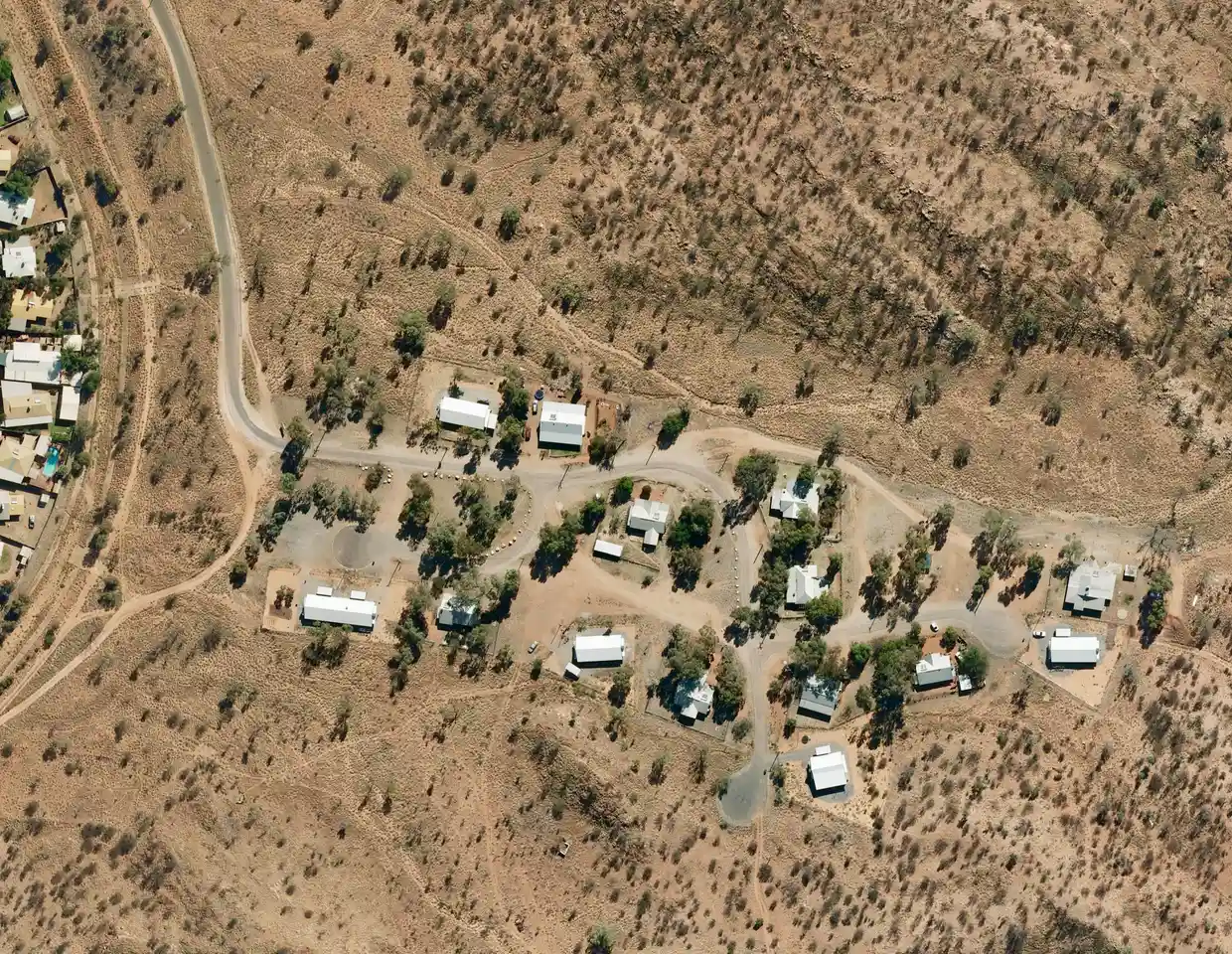
Remote Indigenous community pioneers 3D-printed homes set to change rural lives

The Guardian
3 Nov 2022
Traditional owners of Mparntwe collaborate with Melbourne company Luyten to combat housing shortages and improve Ilpeye Ilpeye residents’ lifestyle
An Indigenous community in Alice Springs is hoping to lead the way towards a 3D-printed home revolution in rural, regional and remote Australia.
After becoming the first town camp in the Northern Territory to be granted freehold title of their land by the Northern Territory government this year, Central Arrernte traditional owners of Mparntwe (Alice Springs) plan to collaborate with Melbourne-based company Luyten to 3D-print five homes at the Indigenous community of Ilpeye Ilpeye.
Central Arrernte woman Anna-Lisa Stirling is the chairperson of the Ilpeye Ilpeye Aboriginal Corporation (IIAC) and has lived in the community all her life. She sees the project as an opportunity to combat housing shortages and improve the lifestyle of residents.
“My parents lived here … they’ve gone from living around the Alice Springs region, with their own little shelter … living in an army shelter, to a tin shed, to the brick houses, so the 3D build would be exciting,” she says.
“To create another step in that history would be a great achievement, just knowing that we’re moving a step forward.”
Dr Salvin Gounder, a development adviser working with IIAC, says Luyten has a prototype in Alice Springs to demonstrate the potential of 3D house printing on the corporation’s land.
“We had to come up with a design that suits the arid climate,” he says.
“We needed design principles that can help build houses for the climate and the cultural environment, and houses that are robust and energy-efficient for communities.”
According to the Luyten CEO, Ahmed Mahil, up to 30% of homes in rural Australia could be 3D-printed by 2030 as a means of tackling the housing crisis in the regions.
Mahil believes that for communities like Ilpeye Ilpeye – where houses need to cater to extreme climates – 3D printing offers a cost saving, allowing otherwise expensive insulation techniques to be replaced by printed concrete.
“We realised in Alice Springs that they have a problem. The current housing they have – brick and mortar – it doesn’t work when it comes to summer or winter. It’s just like an oven or a fridge.
“They needed walls that were half-a-metre wide, which is six bricks next to each other. Imagine the cost of that.”

Mahil describes the automation of the construction industry as “a mission”, considering that conventional building uses “about seven trades to build a wall”.
“We’re talking about going to Armidale or Wagga Wagga or Ballarat, and the cost doubles because there are not as many tradesmen in those areas … that building process negates any saving you make on buying the land.
“You’re at the mercy of the tradesmen you fly in and out.”
Mahil says speed is also one of 3D printing’s biggest assets. Luyten’s largest mobile crane printer – named Platypus X12 – is able to print whole homes for the Ilpeye Ilpeye community straight on to a slab. Another Luyten model, a two-bedroom, two-bathroom house called Geode 2, would take about 22 hours to print and would be fully functional in a week.
Some dislike 3D printing’s coil-like surface, Mahil says, adding that Luyten can print a smooth finish.
“We have a compliant contour nozzle, where the printing doesn’t come out like toothpaste, it trowels itself as it goes.”
In September, Sydney-based Contour 3D printed a pool cabana on The Block, creating renewed interest in 3D printing in Australia. But while those in the industry predict a boom, progress is slow compared to the use of the technology overseas.
A 3D printed farmhouse was created in rural China during 2021, and Europe’s first habitable 3D-printed house was erected in the Netherlands earlier that year. Also in 2021, American company ICON completed several projects in Texas, including a village that provides permanent housing for those who have experienced chronic homelessness, and residences printed with lavacrete that are designed to withstand natural disasters.
Back in Alice Springs, Gounder hopes Ilpeye Ilpeye’s project is just the beginning. The corporation is considering purchasing a Luyten printer in the hope the technology can become a social project for the community to print more houses.
“If we can train locals how to use the machine or other components of the build, for example rendering the walls, there can be a crew trained to do each step,” he says.
Ultimately, he believes the technology is here to stay.
“It’s not the whole solution by any means for the building industry, but it’s just another way forward for energy-efficient housing.”
Stirling acknowledges there are risks associated with using new technology in the first trial of its kind in Australia, but says its potential for the future of Indigenous housing outweighs any fear.